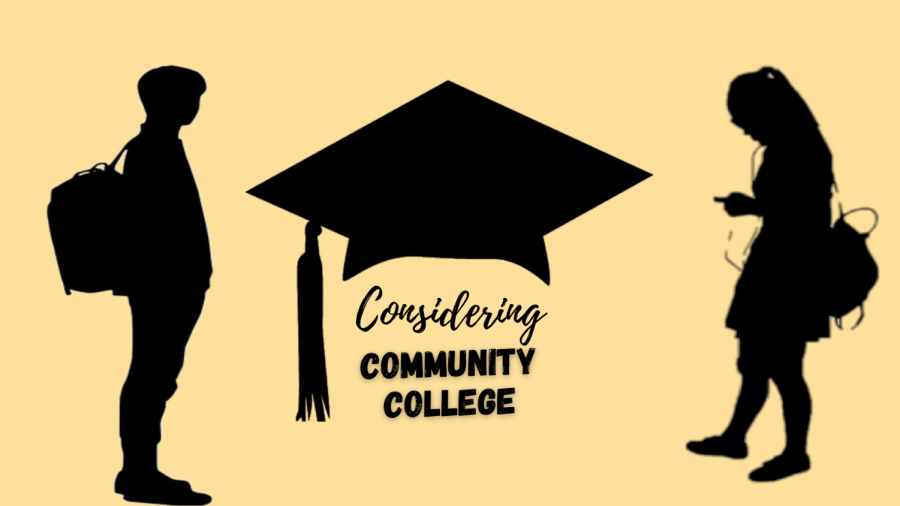Community college: A better option than you think
Graphic by Kelly Avila CHOOSING THE RIGHT FIT- Community college is often viewed as a poor man’s education or the last option. However, attending a community college has several financial benefits. “There’s no such thing as a ‘bad education’ as long as you put in your part to study and work hard,” said Gaby Navarro, a senior.
June 8, 2021
As graduating seniors on social media post pictures of their cal state college acceptances, they’re rightfully being celebrated. Unfortunately, there isn’t as much coverage for those going to a community college (CC). Often, a CC is advertised as the last option: a backup. But really, it’s an even better option than one might think, specifically when it comes to transferring.
In an article by the Association of American colleges and universities that analyzes data on transfer students, “Overall 17 percent of the [entering class] at public institutions come from community colleges, compared to 10 percent at private institutions,” the report said. “Public institutions enroll more community college transfer students than private institutions across all selectivity bands.” Fifteen point three percent of students from community college transfer, so it is important to keep in mind that not all CC students plan to transfer.
Going to a community college in Los Angeles County straight after high school with the goal of transferring can be free under the Promise Program, a program that waives tuition fees for the first two years. “Who in their right mind would pass up on two free years of college? People generally don’t like handouts [because] they think it devalues what’s being handed out [but] my mom did the whole two year-then-transfer thing so she’s fully behind me doing it,” said Maximiliano Espinoza, a senior.
In addition to saving money for the first two years, there are more financial benefits in choosing a community college. According to “How much do you really save by going to community college?” by Kathryn Flynn, “Students can save as much as $30,000 or more by attending a community college instead of a private four-year college. Students can save about $8,000 by attending a community college instead of a public four-year in-state college.”
The reason CCs are often seen as a last option is due to the stigma that it’s a poor person’s education, and it isn’t as good. “I think a lot of people think the more money you put into something, the better quality. Therefore when we say community college, people automatically think it’s not going to give you an education as good as a university. They assume it’s a place you go to when you don’t have the money or choice to go anywhere else. There’s no such thing as a ‘bad education’ as long as you put in your part to study and work hard,” said Gaby Navarro, a senior.
Despite the “last resort” reputation CCs receive, they can also be a life saver. “As a senior in high school, I was ready to attend CSULB. My dad—the breadwinner—lost his job 6 months before graduation, and FAFSA was not helping considering my family’s income the previous year. Due to the circumstances, I opted to go to CC,” Ms. Carvajal, freshman english teacher, said. She soon found that going to a community college would only benefit her.
“I came out of UC Irvine with more than 50% less debt than my peers. I did feel bad going to a CC, because I had my hopes set on CSULB, but looking back, I see that it actually was more beneficial. Usually, when I tell people I went to a CC, they’ll make a “positive” comment as if I need reassurance that it is okay. I know they might have good intentions, but really I am proud of having attended a CC,” Carvajal said.

